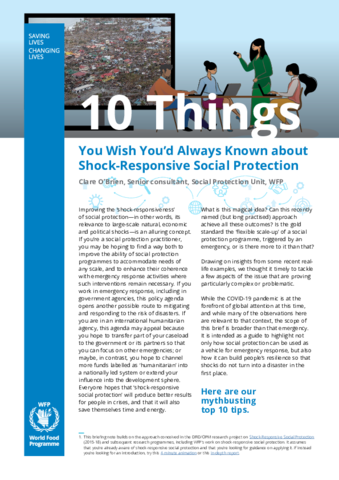
Improving the ‘shock-responsiveness’ of social protection—in other words, its relevance to large-scale natural, economic and political shocks—is an appealing prospect both for governments and for their partners working in social protection and humanitarian assistance. The approach has entered the mainstream in recent years and there are now hundreds of experiences worldwide of adaptations being made to social protection programmes in order to build people's resilience, or to mitigate and respond better to the risk of disasters. Familiarity with the techniques are growing, but some aspects are proving particularly complex. This short publication draws on insights from some recent real-life examples to offer 10 key tips.
